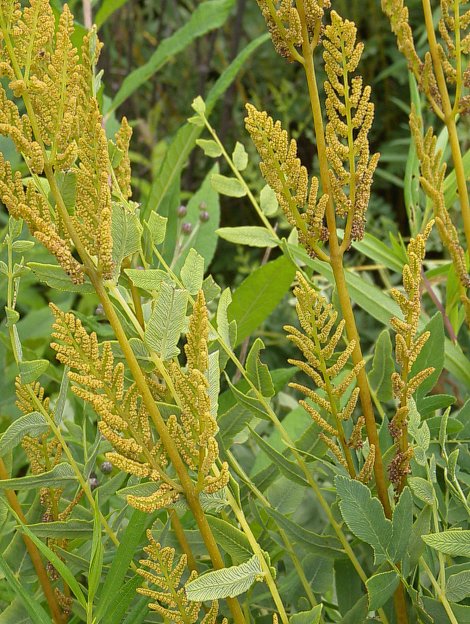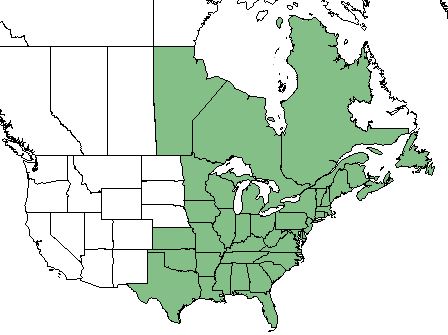Difference between revisions of "Osmunda spectabilis"
(→Conservation and Management) |
|||
| Line 43: | Line 43: | ||
==Conservation and Management== | ==Conservation and Management== | ||
| + | ''O. spectabilis'' is listed as commercially exploited by the Florida Department of Agriculture & Consumer Services Division of Plant Industry, as threatened by the Iowa Department of Natural Resources Parks Recreation and Preserves Division, and as exploitably vulnerable by the New York Department of Environmental Conservation Division of Land and Forests. <ref name= "USDA Plant Database"/> | ||
==Cultivation and restoration== | ==Cultivation and restoration== | ||
Revision as of 16:52, 24 May 2018
| Osmunda spectabilis | |
|---|---|

| |
| Photo by John Hilty at IllinoisWildflowers.info | |
| Scientific classification | |
| Kingdom: | Plantae |
| Division: | Pteridophyta – Ferns |
| Class: | Filicopsida |
| Order: | Polypodiales |
| Family: | Osmundaceae |
| Genus: | Osmunda |
| Species: | O. spectabilis |
| Binomial name | |
| Osmunda spectabilis L. | |

| |
| Natural range of Osmunda spectabilis from USDA NRCS Plants Database. | |
Contents
Taxonomic Notes
Synonyms: O. regalis Linnaeus var. spectabilis (Willdenow) A. Gray
Varieties: none
Description
O. spectabilis is a perennial forb/herb of the Osmundaceae family native to North America, Canada, and St. Pierre and Miquelon (France). [1]
Distribution
O. spectabilis is found in the eastern half of the United States, the Manitoba, Ontario, and Quebec regions of Canada, and St. Pierre and Miquelon (France). [1]
Ecology
Habitat
O. spectabilis proliferates in bogs, marshes (including tidal), moist forests, floodplains, swamp forests, and other wetlands. [2]
Phenology
O. spectabilis flowers March-May. [3]
Fire ecology
O. spectabilis is not fire resistant and has a low fire tolerance. [1]
Conservation and Management
O. spectabilis is listed as commercially exploited by the Florida Department of Agriculture & Consumer Services Division of Plant Industry, as threatened by the Iowa Department of Natural Resources Parks Recreation and Preserves Division, and as exploitably vulnerable by the New York Department of Environmental Conservation Division of Land and Forests. [1]
Cultivation and restoration
Photo Gallery
References and notes
- ↑ 1.0 1.1 1.2 1.3 USDA Plant Database https://plants.usda.gov/core/profile?symbol=OSRES#
- ↑ Weakley, A. S. (2015). Flora of the Southern and Mid-Atlantic States. Chapel Hill, NC, University of North Carolina Herbarium.
- ↑ PanFlora Author: Gil Nelson URL: http://www.gilnelson.com/PanFlora/ Date Accessed: 5/24/18